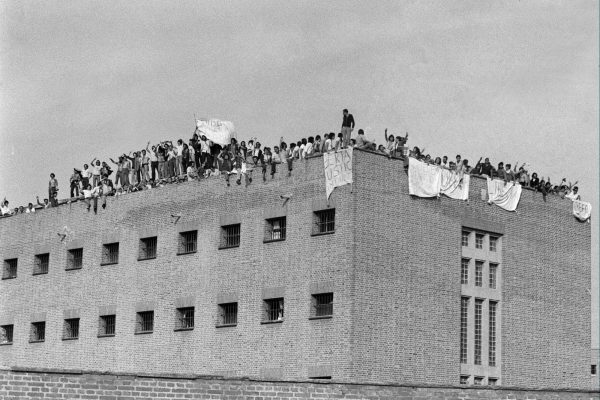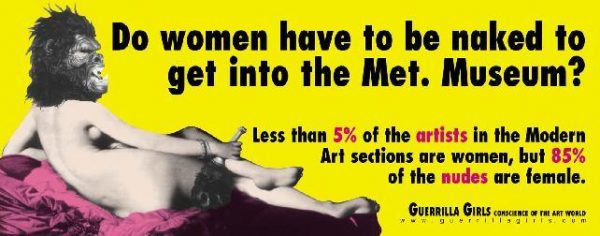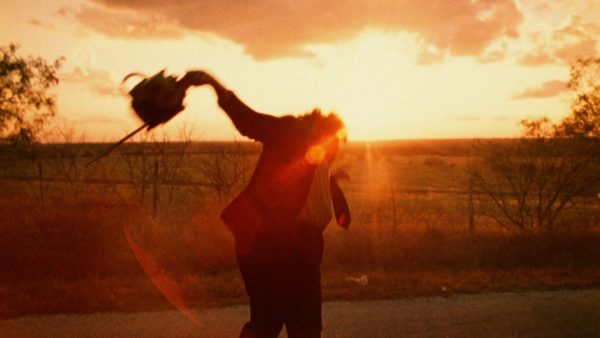20 November marks the fortieth anniversary of the death of General Franco. And while the insurrectionist’s victory in the Spanish Civil War paved the way for a 36-year dictatorship – as resilient as it was anachronistic – the country’s Transition to democracy is traditionally seen as exemplary. The attempted coup of 1981 was a potentially lethal threat to Europeanisation, averted through the fortitude and quick thinking of King Juan Carlos, who steered the country towards a stable monarchical democracy, built on the bedrock of barring memories of the past from dictating the future. At least that is what young Spaniards were brought up to believe. The general elections to be held on 20 December are the most unpredictable and politically volatile since 1979; this is both a symptom and cause of the crisis in a once widely accepted narrative.
Conflicting accounts of what actually happened during the Civil War and the dictatorship are increasingly compounded through bitter debates over the ethics and pragmatism of what predicated the 1978 Constitution. That is, collective amnesty (some would say amnesia) coupled with market capitalism. The architects of the new state now stand accused of privileging politics over justice and equality, not only silencing the crimes of the past but preserving the interests of pre-existing elites who many believe must be held accountable for Spain’s current crises.
Javier Cercas, arguably Spain’s greatest living novelist, is the subject of both critical veneration and opprobrium for his work, best-selling ruminations on this very history, a meld of fact and fiction – the Civil War in Soldiers of Salamis (2001), the coup attempt in The Anatomy of a Moment (2009). Amongst his many accolades figure Spain’s National Book Award, the Independent’s Foreign Literature Prize, and taking up the Weidenfeld Visiting Professorship at Oxford this year, a post previously held by George Steiner, Umberto Eco and Mario Vargas Llosa. For his admirers, Cercas combines the talents of a historian with that of a writer, producing works whose broad formal, socio-historical and linguistic canvases bear comparison with Vargas Llosa’s The Time of the Hero (1963) and The Feast of the Goat (2000). Conversely, however, his increasingly vocal critics charge him with a series of ideological and literary tics, viewing his propensity to write himself into his novels as tedious and politically tendentious.
Cercas is an occasional contributor to El País, and the canonization of this former university lecturer in the national literary field is tied to support from what was, until recently, Spain’s most reputable broadsheet. In an issue compounded by declining editorial standards and sales, the ostensibly progressive newspaper is now charged with supporting the kind of consensus politics that propped up a sham democracy. At its most extreme, this vision construes Cercas as a collaborator whose success is due in no short measure to cronyism. Given the nature of this charge, I ought to admit from the outset that I consider him a friend and that at least some of the observations I will make about his novel, Las leyes de la frontera (2012) – literally, The Laws of the Frontier, but translated into English as Outlaws in 2014 – are informed by pub conversations and lectures. For non-Spanish readers, the reasons why Cercas describes Outlaws as the flip-side of The Anatomy of a Moment might not be immediately clear; explaining how and why it is will, I hope, shed some light on both Cercas’s texts and Spain’s Transition.
Set in Gerona, the medieval city to which Cercas’s family moved when he was four, Outlaws is told from the perspective of an author researching a book on the criminal Antonio Gamallo a.k.a. El Zarco, who died of AIDS. The narrator interviews a number of figures who were intimate with the felon, but his principal source is Ignacio Cañas, El Zarco’s lawyer who also formed part of his criminal gang as a teenager, going by the moniker of Gafitas (a reference to his wearing glasses). Cañas/Gafitas draws upon Cercas’s personal recollections alongside the memoires of the lawyer who represented Juan José Moreno Cuenca a.k.a. El Vaquilla, Spain’s most notorious young offender and the man on whom El Zarco is based, who inspired a succession of sensational media reports, films and even songs from the late-1970s to mid-1980s.
It is not hyperbolic to claim that one cannot understand Spain’s Transition without taking drugs into account. Cercas described heroin as ‘the war of my generation’, recalling a conversation with a group of friends in which they discussed how they had all known people to die of overdoses or AIDS-related illnesses from intravenous needles. To a far greater extent than most other European countries, contracting HIV in Spain is primarily associated with drug consumption. Spaniards born in the early 1960s were the first generation to reach adolescence following the death of Franco, while also experiencing record highs in unemployment and unprecedented access to narcotics. Paternalism and prohibition were frequent bedfellows during the dictatorship, while social and economic liberalisation were central to democratisation. Exacerbated by a global oil shortage and economic recession, the consequences of Spain’s somewhat ad-hoc modernisation during the 1960s – principally the unregulated proliferation of urban expanses in and around Barcelona, Madrid and Bilbao – provided the fertile pre-conditions for a juvenile delinquency and criminal activity that, somewhat ironically given its roots in structural deficits forged under the dictatorship, was frequently advanced by those on the right as proof that democracy was not working.
In 1977, José Antonio de la Loma’s Perros callejeros (Street Dogs), a film based on the exploits of El Vaquilla, was seen by nearly two million spectators, finding its most loyal audiences in flee-pit neighbourhood cinemas. While its numerous follow-ups and sequels would rely on the modern Spanish rumba as popularised by Los Chichos, Los Chunguitos or Los Amaya – groups which provided the soundtrack to real-life slums and shantytowns throughout the Peninsula – the somewhat incongruous incorporation of funk bass lines into Perros callejeros highlights that the quinqui (a slang word for a new kind of urban juvenile delinquent) films were the closest Spanish equivalent to blaxploitation. At the time, they generated fierce sociological debate, while transforming poor and barely pubescent rebels into meta-criminals and cultural archetypes. Much like the characters who encounter the Knight errant in part two of Cervantes’s Don Quixote having read of his exploits in the first part, both real-life bank managers and (semi-) fictional characters are usually familiar with the mediated quinqui personalities they meet in the films. This was compounded by the casting of real-life criminals to play versions of themselves, leading to charges against the cinema for glamourising anti-social lifestyles.
Shortly after Carlos Saura’s Deprisa, deprisa (Fast, Fast) won the Golden Bear at the 1981 Berlin Film Festival, its lead protagonist was arrested for holding up a bank. While De la Loma’s cinematic melodramas also proved popular in Mexico, Saura’s triumph in Germany was a rare example of an internationally renowned auteur engaging with youth delinquency, or Spain promoting a genre generally considered pulp fiction in the pejorative sense of the term. At a time when the country was attempting to promote a modern newly Europeanised image to the world and to itself, film institutions promoted lavish period dramas while the 1980s belonged to Pedro Almodóvar, a global technicolour ambassador in whose films drug use was, at least initially, seen to be ludic and liberating.
Addiction cut across class-divides, but that is not to say that the pernicious effects were equally distributed across social groups: its victims were predominantly poor, and the state was remarkably slow to provide any kind of institutional support. The first recorded heroin overdose in Spain was in 1976, the number of deaths rose each year from 1977 onwards peaking with 813 in 1991 alone. These estimates are in themselves conservative, not taking into account the frequent suicides of addicts. A 1978 government campaign, ‘Drugs Kill’, by the right-of-centre UCD government arguably did more to encourage than discourage drug use amongst a nihilistic generation of young reprobates. The ostensibly Socialist PSOE party, who won a landslide victory in 1982 under the slogan ‘For Change’, failed to fulfil their election promise of addressing youth unemployment, and verged dangerously close to actively promoting the consumption of drugs. A decision to almost immediately decriminalise heroin was criticised by The Economist amongst others. Although there was a policy U-Turn in 1984, legislation remained amongst the most permissive in Europe until 1988, by which time it was clear that the situation was out of control. Attacks with violence and intimidation were up 163% from the previous year in 1983 and 231% in 1984, and by the mid-1980s there were an estimated 60,000 to 125,000 regular heroin users in Spain.
In the manner of its protagonists, the quinqui genre was not built to last. As the decade progressed, sections of society became wealthier as a result of the country’s European integration and the neo-liberal policies aggressively pursued by a reputedly left-wing government; the disenfranchised became an increasingly embarrassing and ostensibly anachronistic relic of the marginality and poverty Spain was meant to be leaving behind. That said, it was difficult to ignore the near-ubiquitous presence of junkies in many neighbourhoods. Jeremy Harris, BBC correspondent to Spain at the time, recalled how it became increasingly common in some establishments to drill holes into spoons so that they could be used to stir coffee but not to cook heroin. Instead of attempting a holistic response to this epidemic, local, regional and national governments embarked on major projects that would displace and disguise the problem. Arguably the determining factor for the consensus surrounding Barcelona’s candidature for the 1992 Olympics was the Gothic district becoming a no-go area in which the police were rapidly losing control, unable to prevent a mass, indiscriminate attack on black males by a Gypsy family, one of whose members had died as a result of heroin bought from an African drug-dealer. In Bilbao, where the Guggenheim now stands, was a junky’s playground, in which frequently lethal car-chases between juvenile delinquents and police were an almost daily occurrence.
While virtually all of the original quinquis have died, Spain’s current financial crisis threatens to reproduce the conditions that underpinned their existence. The fact that Outlaws does not engage with this debate is, for Cercas’s critics, evidence of his conservatism. Although resisting a rose-tinted view of the Transition, the novel does imply that the late-1970s and early-1980s paved the way for a twenty-first century Spain that is a better place to live than it was three decades earlier, whatever its faults. At this point, it is important to distinguish between two possible sources of criticism that are frequently and problematically conflated: the Constitution itself, and its veneration as a prerequisite and guarantor of Spain’s democratic credentials (6 December, the day on which it was signed, continues to be a bank-holiday). It is both plausible and consistent to reserve judgement on the former and reject the latter. While the Transition could have been done much better, equally it could have been done much worse. Nevertheless, the fetishistic and uncritical reverence for the Constitution by successive generations is to my thinking both dishonest and counter-productive.
Inter-generational tensions are as important as political differences; the youngsters who once wondered how and why their parents allowed Franco to die in his bed as head of state are now charged with acquiescence by their own children. Soldiers of Salamis and The Anatomy of a Moment can both be construed at Cercas’s attempt to come to terms with his national and familial past: his father was a former member of the Falange – Spain’s proto-fascist movement instrumental in bringing Franco to power – and voted for Adolfo Suárez, Spain’s first democratically elected President. His swift and opportunist rise through the dictatorial ranks drew suspicions about his democratic credentials, by those on both ends of the political spectrum, albeit for different reasons. Offering a narrative side-stepped by less contentious accounts of Spain’s Transition, Outlaws is not only Cercas’s first novel to feature adolescent protagonists, but also a recognition that the actions and characters of his generation now form part of the nation’s political tapestry.
The novel’s action commences in the summer of 1978, a few months before the Constitution was signed. Cercas replicates a moral ambivalence that infused much of the first-generation of quinqui culture, in which the lines between perpetrator and victim are frequently blurred. It is not always clear whether the journalists or commentators on El Zarco are exploiting him or vice versa. In terms of the book’s central relationship, there is an ambiguity as to whether the quinqui ringleader genuinely has an upper hand over Cañas/Gafitas, whose relatively stable lower middle class family background ensures that he has both more to lose and something to fall back on. Although coerced into a life of crime, he is attracted by Zarco’s female side-kick, Tere, and an opportunity to find a reprieve from regular torment at school, where he is bullied for being a charnego – the pejorative for someone like Cercas, who resides in Catalonia but was not born there and does not necessarily speak Catalan well, if at all. A conversation between the narrator and Cañas runs as follows:
‘It’s odd. The way you tell the story, anyone might think that it wasn’t you who joined up with Zarco’s gang but Zarco who recrited you.’
‘It doesn’t strike me as a mistaken deduction. Although probably the two things happened at once; in other words: that I needed what Zarco had and that Zarco needed what I had.’
‘I understand what you might have needed from Zarco, but what could Zarco have needed from you? That you acted as bait or a front, as you put it?’
‘Sure. That was useful for a gang like that; besides, remember what Tere told me to convince me to come with them on the robbery in La Montgoda: they needed someone like me, someone who looked like a student at the Marists’ school with a face like he’d never broken a plate, someone who spoke Catalan…’
While the quinqui films were told from the perspective of their anti-heroes, the principal narrator in Cercas’s novel is a character who is simultaneously an outsider and an insider: always on the periphery of the teenage gang, Gafitas will subsequently be integrated into the broader society.
This liminal perspective ensures that the novel achieves more than a revival of a much-maligned genre, and facilitates greater character development: the cinematic texts tend to end with either their protagonists dying in a blaze of glory or regaining their liberty. But here we are privy to the eternal rebel’s slow descent as he enters middle age and endures a drawn-out death and legal processes. In the words of the governor recalling meeting Zarco again on his return to Gerona prison: ‘He was skin and bones, had difficulty walking, he’d lost most of his hair and his face looked like a preview of his skull, with his black teeth, sunken eyes and fleshless cheeks’. Divorced from their original context and audience, the thrill of car-chases can’t compensate for the low-production values and tedious repetition, but Cercas is more interested in the mediation of El Zarco’s exploits than in the acts themselves. The character is trapped in a persona, as hooked on celebrity as he is on crime and drugs, while heroin remains a subtext until near the end of the narrative. Although most depictions of El Vaquilla focus on his desire for freedom as he staged increasingly daring and dangerous escapes from high-security prisons (footage of this is readily available on YouTube), El Zarco’s addiction to freedom and crime is shown to represent a deep-seated institutionalisation and self-sabotage by which he struggles to survive outside of prison.
It is shameful proof of my own prejudices that I doubted that Moreno Cuenca had written his own memoires on which the film Yo, el Vaquilla was based. On consulting the handwritten prison diaries currently held in Spain’s National Library in Madrid, I discovered it coincided almost entirely with the published memoires. There were, however, some minor but telling differences between the manuscript and book whose publication was facilitated by De la Loma. First, the frequent spelling mistakes are incongruous within the context of a remarkably articulate text, which suggests a rare intelligence betrayed by a lack of formal schooling. Second, edits have been made: some racist comments are excised while, more substantially, references to exploitation at the hands of filmmakers and journalists keen to capitalise on his fame have been removed. For an admirer of Cervantes such as Cercas, the narrative palimpsests of the quinqui genre are undoubtedly attractive; more generally, the dialogue between Outlaws and its cinematographic antecedents is reminiscent of that established between Don Quixote and the romances of chivalry, whose conventional form and content it simultaneously seeks to replicate and deconstruct. In both cases, the innovations are that archetypes are endowed with psychological depth and self-consciousness. The two texts are equally suspicious of narrative omniscience and the sources for reputably real-life stories and characters, a questionable aspect of the quinqui films, which its directors often went to some efforts to conceal. Literary self-reflexivity does not, of course, necessarily imply any greater level of objectivity.
In spite of their differences, Adolfo Suárez and El Zarco are both skilled orators, able to inspire confidence in spite of the distrust they cultivate. Something similar could be said of Cercas’s prose, and there is a synergy when he employs a seductive literary tone to explore his fascination with natural leaders, plotting out a cartography of charisma as he dissects their appeal. Take, for example, the description of the first time Gafitas accepts an invitation to visit La Font, the bar that is El Zarco’s stomping ground. Anne McLean, Cercas’s first-rate translator, respects the proliferation of colons and semi-colons, an authorial hallmark which imbues much of his work with an almost Proustian syntax that belies the dynamism and pace of the prose and narrative:
A little while later a slightly older guy came over to sit with us. He was wearing cowboy boots, very tight flared jeans and his shirt unbuttoned; a gold chain shone on his chest. The guy sat astride a chair, beside Zarco, leaned his forearms on the chairback and pointed at me: And this posh kid? Everybody shut up; I suddenly noticed eight pairs of eyes staring at me. Zarco broke the silence. Fuck, Guille! he admonished. He’s the guy from Vilaró.
A psychologically rich anti-hero whose legend is grounded in his cunning also chimes with several of Cercas’s preoccupations: what determines our actions in split-second decisions? Or the capacity of human beings to commit acts that are counter-intuitive in relation to both prior behaviour and ingrained beliefs? Why, in Soldiers of Salamis does a Republican solider let a Falangist soldier escape rather than shooting him? How and why did the coup and human psychology render a situation in which, on storming the National Parliament, Lieutenant-Colonel Tejero was defied by three MPs – Santiago Carillo, leader of the Communist Party, Adolfo Suárez, the Prime Minister, and General Gutiérrez Mellado, the Deputy Prime Minister – whose biographies contained little to suggest more than a reluctant commitment to democracy. Outlaws presents two interrelated mysteries that will keep Gafitas out of youth detention centres and allow this juvenile delinquent to transform himself into a successful lawyer: a policeman neglecting to arrest him despite the obligation to do so; and El Zarco seemingly allowing himself to be caught in order to let his accomplice to escape. While the odds were clearly stacked against some and in favour of others, contingency and chance still decides the winners and losers.
As the redevelopment of El Zarco’s old Gerona reveals, the city’s most trendy district does its best to erase its gritty history. A metonym for what has happened throughout Spain over the last 40 years, Outlaws thereby functions as an act of commemoration to the victims of the Transition. For most of the novel, heroin may only be referred to elliptically, but the willingness to open up a space for its representation chimes with local readers, especially at a time when nearly every Spaniard over a certain age has memories of a friend or relative who succumbed to addiction. An almost psychotic relegation of this legacy to the private sphere is manifest in the trepidation with which parents talk of children who committed suicide, either because they owed dealers money or died in the street after a bad hit. It may be unethical to push the analogy too far, but there are clear parallels with the silence and shame put upon those prohibited from publically mourning the loss of loved ones during the Civil War and Franco’s reign. In the novel, Cercas exhibits his principal contribution to Spanish literature: honing into the seemingly peripheral but telling details of the grandest historical narratives. But more than that, Outlaws gives voice to the dispossessed – especially crucial when eulogising the Transition prevents its victims from being properly mourned – and through writing, settles a human deficit.




